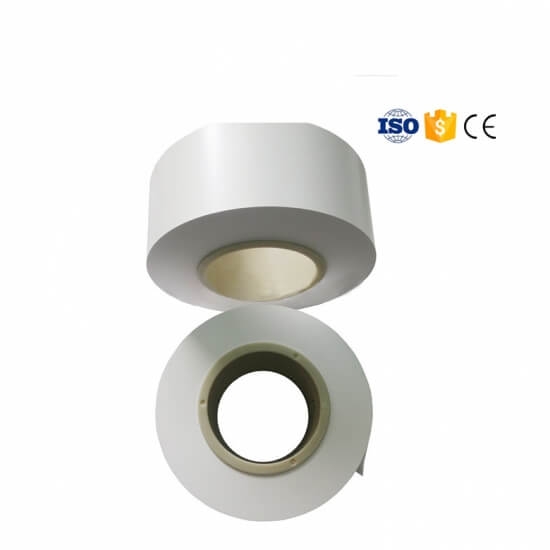Lith Corporation, founded in 1998 by a group of material science doctor from Tsinghua University, has now become the leading manufacturer of battery lab&production equipment. Lith Corporation have production factories in shenzhen and xiamen of China.This allows for the possibility of providing high quality and low-cost precision machines for lab&production equipment,including: roller press, film coater,mixer, high-temperature furnace, glove box,and complete set of equipment for research of rechargeable battery materials. Simple to operate, low cost and commitment to our customers is our priority.
Celgard Separator: A Comprehensive Guide
Celgard separators are specialized components used in lithiumion batteries and other electrochemical systems. They play a critical role in ensuring the safe and efficient operation of these devices by separating the anode and cathode while allowing ions to pass through. Celgard, a brand owned by Celanese Corporation, is renowned for producing highquality separators that meet stringent performance requirements.
Below is an indepth exploration of Celgard separators, including their composition, properties, applications, manufacturing process, advantages, and pricing.
●1. What Is a Celgard Separator?
A Celgard separator is a microporous membrane designed to:
Physically separate the anode and cathode within a battery.
Allow the movement of lithium ions between electrodes during charging and discharging.
Prevent internal short circuits caused by direct contact between electrodes.
Key Features
Microporous Structure: Provides pathways for ion transport while blocking electrons.
Chemical Stability: Resists degradation in harsh electrolyte environments.
Thermal Stability: Maintains integrity at elevated temperatures to enhance battery safety.
●2. Composition and Structure
Material
Celgard separators are typically made from polypropylene (PP) or polyethylene (PE), which are thermoplastic polymers with excellent mechanical and chemical properties.
Structure
Trilayer Design: Many Celgard separators feature a trilayer structure (e.g., PP/PE/PP), combining the benefits of different materials for enhanced performance.
Micropores: The membrane contains uniformly sized pores (typically 0.01–0.1 µm) that facilitate ion transport.
●3. Manufacturing Process
The production of Celgard separators involves several advanced techniques:
1. Extrusion:
Molten polymer is extruded into a thin film.
2. Biaxial Stretching:
The film is stretched in two directions to create a highly aligned, microporous structure.
3. Heat Treatment:
The stretched film is heattreated to stabilize the pore structure and improve dimensional stability.
4. Coating (Optional):
Some separators are coated with ceramic or polymer layers to enhance thermal stability and adhesion to electrodes.
●4. Properties of Celgard Separators
| Property | Description |
|||
| High Porosity | Ensures efficient ion transport and low resistance. |
| Excellent Mechanical Strength | Withstands stresses during winding or stacking processes. |
| Chemical Resistance | Resistant to organic solvents and electrolytes commonly used in batteries. |
| Thermal Shutdown Capability | Melts at high temperatures to prevent catastrophic failure in case of overheating. |
| Uniform Thickness | Consistent thickness ensures uniform performance across the battery. |
●5. Applications of Celgard Separators
LithiumIon Batteries
Used in consumer electronics (smartphones, laptops), electric vehicles (EVs), and energy storage systems (ESS).
Supercapacitors
Facilitates rapid charge/discharge cycles due to its low resistance and high porosity.
Fuel Cells
Acts as a gas diffusion layer or ion exchange membrane in certain fuel cell designs.
Specialized Electrochemical Devices
Employed in medical devices, aerospace systems, and industrial equipment requiring reliable power sources.
Battery Separator
●6. Advantages of Celgard Separators
1. Safety Enhancements:
Thermal shutdown capability prevents overheating and potential fires.
2. Performance Optimization:
Low resistance and high porosity ensure efficient ion transport, improving battery capacity and cycle life.
3. Durability:
Excellent mechanical strength and chemical resistance extend the lifespan of the separator.
4. Customizability:
Available in various thicknesses, pore sizes, and coatings to suit specific applications.
●7. Limitations of Celgard Separators
1. Cost:
Highquality separators like those from Celgard can be expensive compared to generic alternatives.
2. Sensitivity to Contaminants:
Particles or impurities in the electrolyte can clog the pores, reducing performance.
3. Limited Flexibility:
Rigid structures may not conform well to irregular electrode shapes in some applications.
●8. Pricing of Celgard Separators
The cost of Celgard separators varies based on factors such as size, thickness, material type, and coating. Below are approximate price ranges:
Standard Separators: $0.50–$2.00 per square meter.
Advanced Separators (Coated or Trilayer): $2.00–$10.00 per square meter.
Factors influencing price include:
Material Quality: Higher purity polymers increase costs.
Thickness: Thicker separators generally cost more.
Coatings: Ceramic or polymer coatings add value but raise prices.
Supplier: Prices vary between manufacturers and distributors.
●9. Future Trends in Celgard Separators
1. Improved Safety:
Development of separators with enhanced thermal stability and faster shutdown capabilities.
2. Higher Energy Density:
Innovations aimed at reducing separator thickness without compromising performance.
3. Sustainability:
Exploration of biodegradable or recyclable materials for ecofriendly solutions.
4. New Applications:
Expansion into emerging fields like solidstate batteries and gridscale energy storage.
●10. Conclusion
Celgard separators are vital components in modern electrochemical systems, providing safety, efficiency, and reliability. Their unique combination of properties makes them indispensable in lithiumion batteries and other advanced energy storage technologies.
If you're considering using Celgard separators for your project, understanding their composition, manufacturing process, and potential applications will help you make informed decisions. Let me know if you'd like further details or guidance!

 ONLINE
ONLINE +86 13174506016
+86 13174506016 Louis@lithmachine.com
Louis@lithmachine.com +86 18659217588
+86 18659217588
 18659217588
18659217588